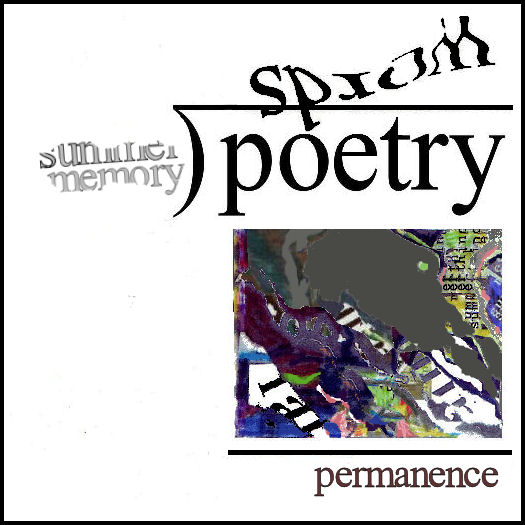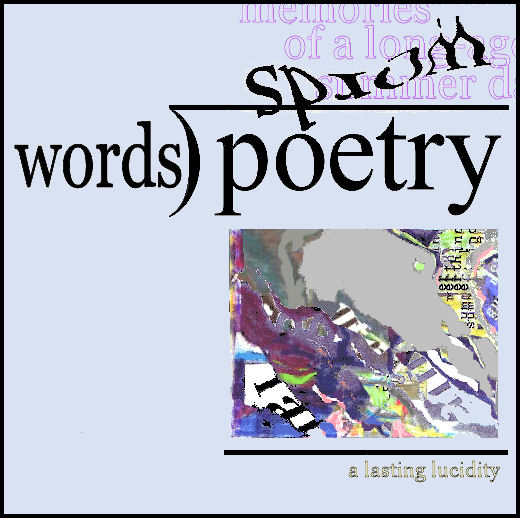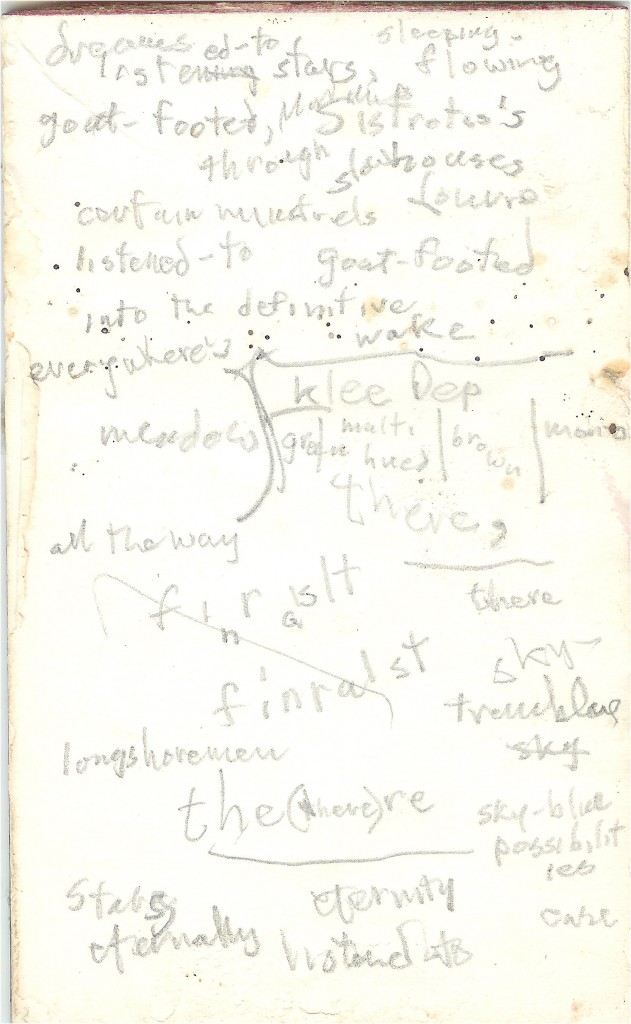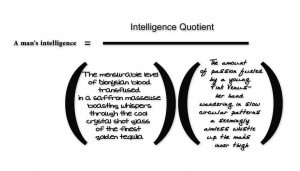Here’s yesterday’s image again:

It’s one of my mathemaku, of course. I’ve actually been working industriously on it, trying get it right enough to submit to some sort of anthology Nico Vassilakis and Crag Hill are putting together. The version above is a recent revision of my first draft of 2007, a variation on “Frame One” of my Long Division of Poetry series.

“Frame One” is similar to the top image except that its divisor is “words.” It had long bothered me because (and make sure to write this down, students, because it’s an excellent example of the way I think about my poems) its claim was that “words” squared (basically–although it’s really distorted words, or words told slant. times regular words) happened to equal an image having to do with summer rain. Why that and not, say, a Pacific sunset? Obviously, the quotient times the divisor could equal anything. That, I didn’t want. Off and on I thought about this, but could think of no way to take care of it. Until a couple of days ago, when I finally concentrated for more than a few minutes on it. I came up with several pretty good solutions, one of them changing everything in the poem but the sub-dividend product (the image).
My final solution (I hope) resulted in the above poem. All I did was add “memories of a long-ago summer day” to the quotient. That assured that the sub-dividend product would have to do with summer–that it would be, that is, a visual poem about summer. And, as a poem, it would be poetry.
No doubt in due course I’ll think of something else I find illogical about it and want to revise it again. For now, though, I’m happy with it.
Oh, I’ve made several changes to the main image in it, too. One was to combat the darkness in the top version (which wasn’t in it until I put it out here). I’m as fussy about getting my graphics looking the way I want them as I am about everything else in a poem–except the choice of font, and things I can’t do anything about with my equipment, like density of resolution.
This entry was posted on Friday, December 4th, 2009 at 8:43 PM and is filed under Bob Grumman, Mathematical Poetry, Mathematical Poetry Specimen, Poetics, visual poetry, Visual Poetry Specimen. You can follow any responses to this entry through the RSS 2.0 feed. You can leave a response, or trackback from your own site.
![100_0085[1]](/wp-content/uploads/2013/11/100_00851-1024x681.jpg)
![100_0087[1]](/wp-content/uploads/2013/11/100_00871-1024x681.jpg)



 Oops, you may need a magnifying glass. My choice of reproduction seems to be the size above, or four times as large. Anyway, it’s called “A Man’s Intelligence” and may be more informrature–a specimen of informratry–than poetry. Let me quote what it says: “A man’s Intelligence” equals “intelligence Quotient” divided by the product of “The measurable level of Dionysian blood transfused in a saffron masseuse boasting whispers through the cool crystal shot glass of the finest golden tequila” times “The amount of passion fueled by a young pink Venus–her hand wandering in slow circular patterns, a seemingly aimless whistle up the man’s inner thigh.”
Oops, you may need a magnifying glass. My choice of reproduction seems to be the size above, or four times as large. Anyway, it’s called “A Man’s Intelligence” and may be more informrature–a specimen of informratry–than poetry. Let me quote what it says: “A man’s Intelligence” equals “intelligence Quotient” divided by the product of “The measurable level of Dionysian blood transfused in a saffron masseuse boasting whispers through the cool crystal shot glass of the finest golden tequila” times “The amount of passion fueled by a young pink Venus–her hand wandering in slow circular patterns, a seemingly aimless whistle up the man’s inner thigh.”
They look great, Bob! Good to see them exhibited.
All the best,
Márton
Thanks, Marton. Who knows, maybe some nut will notice them and be so impressed by them that he’ll scrawl, “Wow!” in chalk on the wall!
Actually, if I were really ambitious, I’d sneak in and vandalize them, at last thereby getting press coverage.